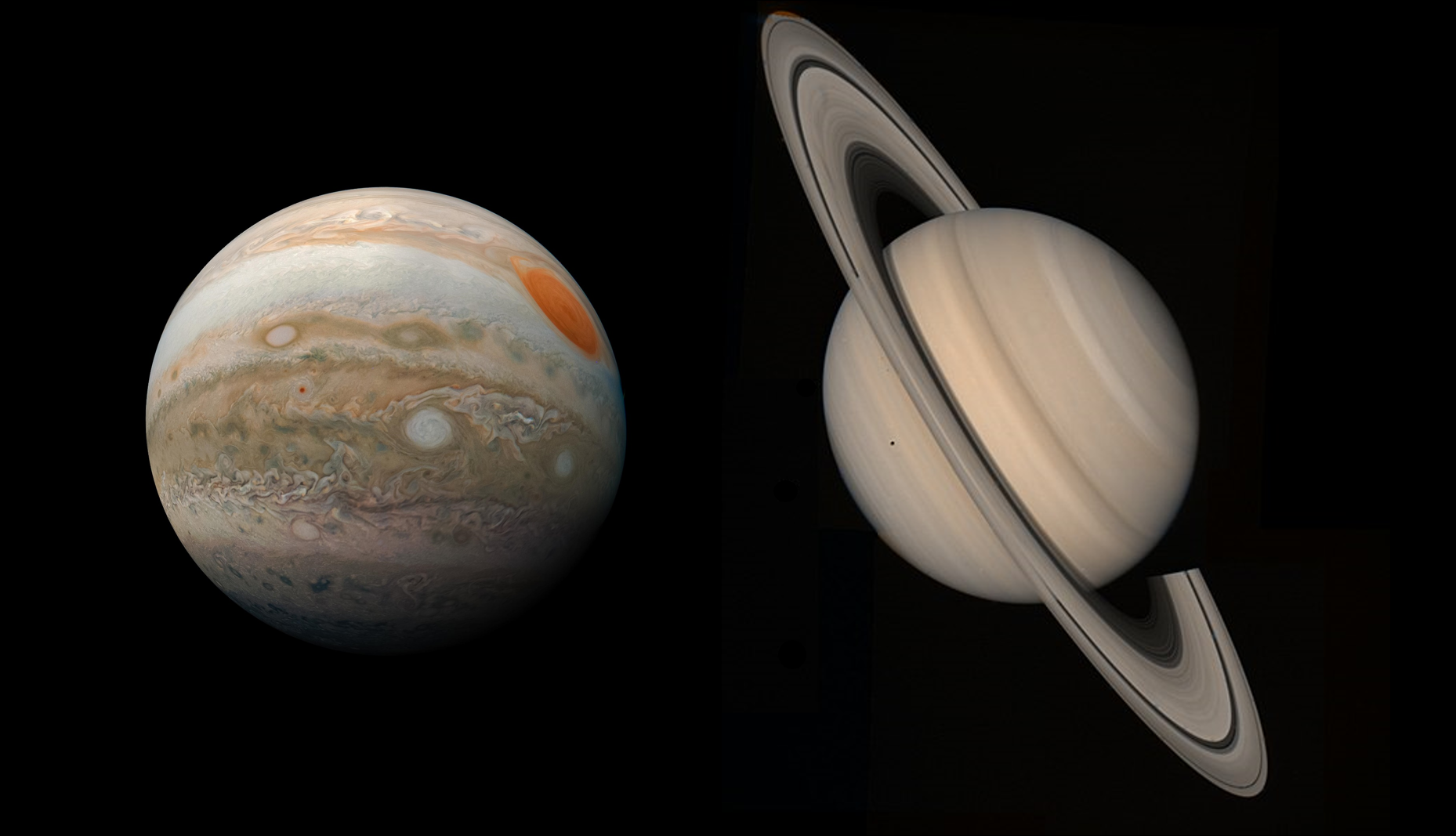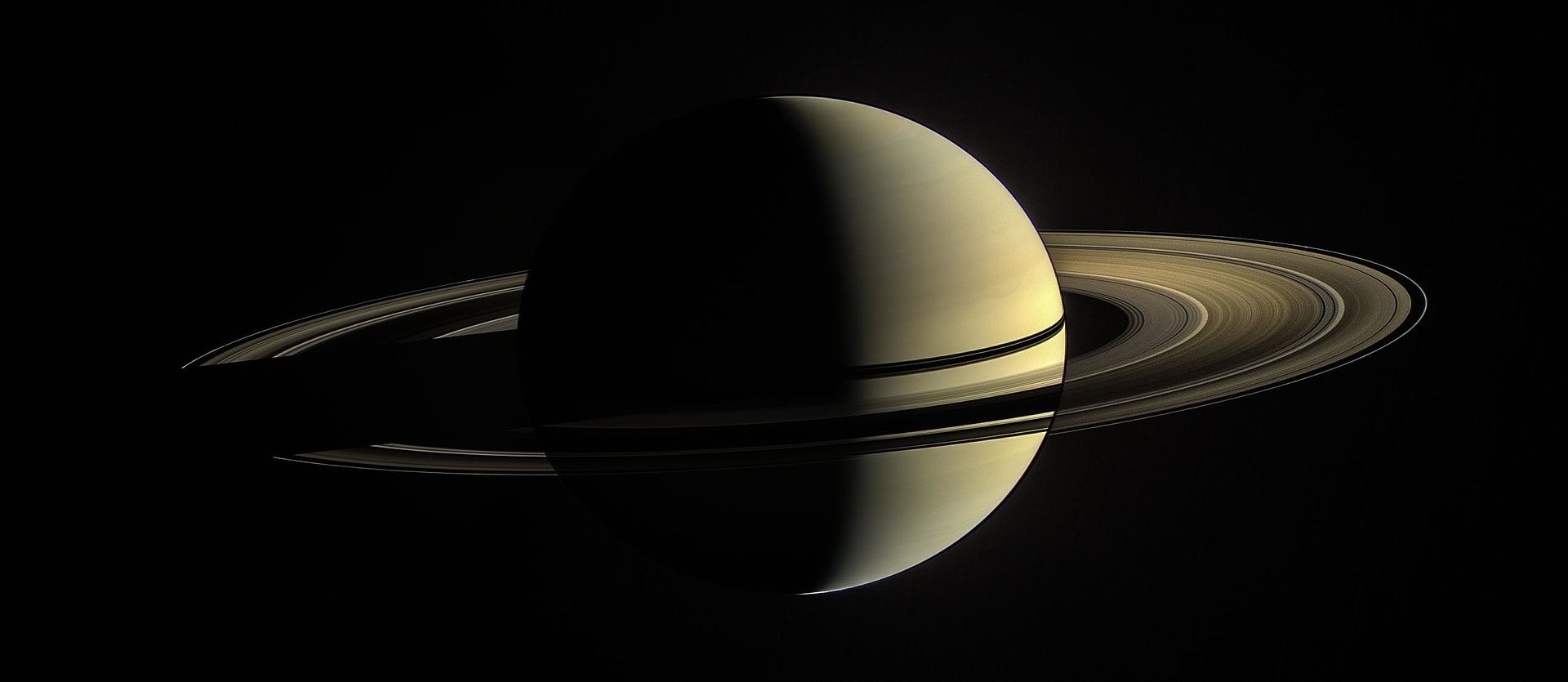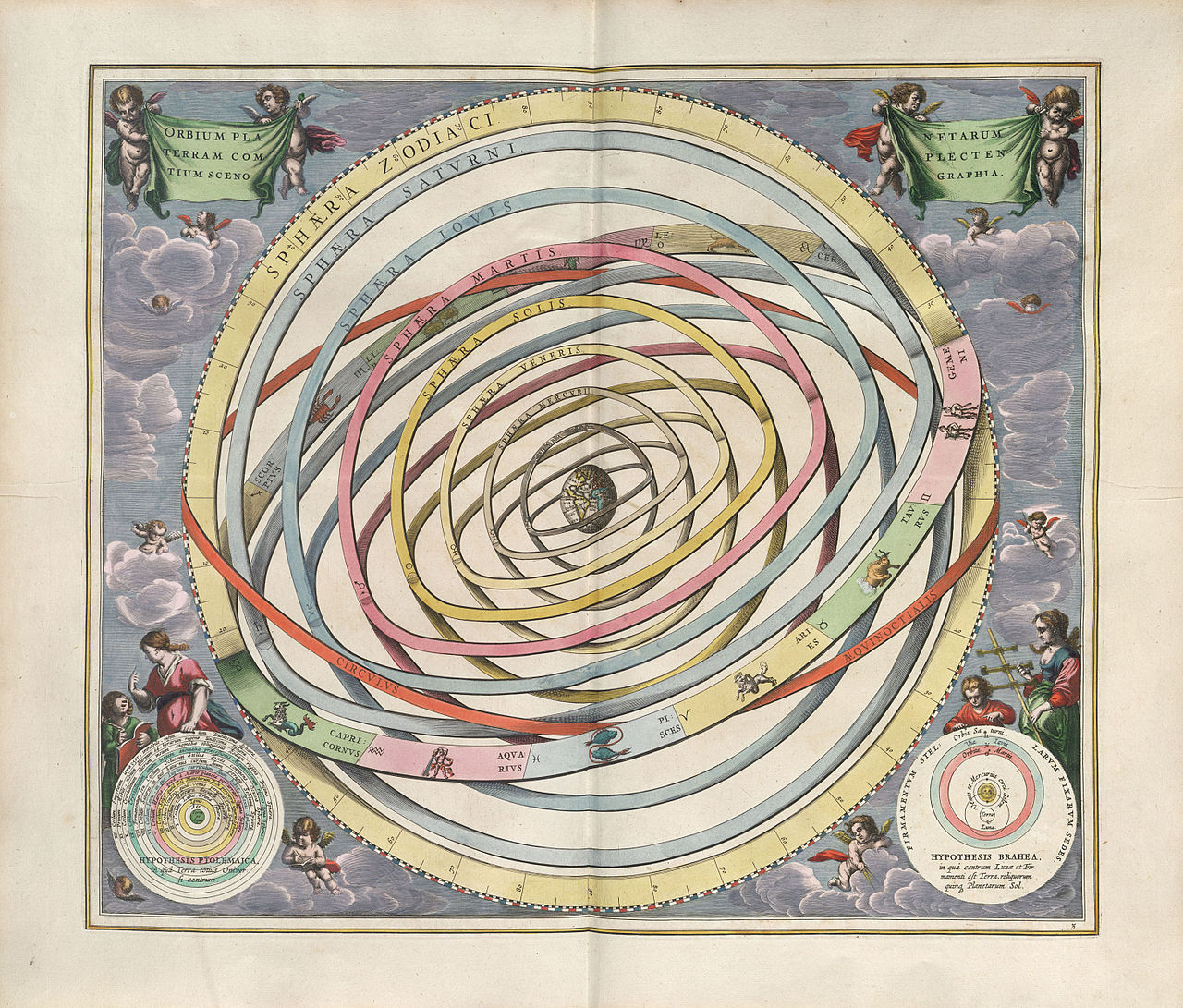Up to now we have concentrated on the inner planets during our expedition through the solar system. These are also referred to as Earth-like planets and have many similarities to our own world. For a truly exotic experience, we need to travel to the outer planets. These are Jupiter, Saturn, Uranus and Neptune. Closest to the Earth are the gas giants Jupiter and Saturn. But what about the asteroid belt? And is it even possible to land on the gas planets?
Jupiter: A magnet for cosmic debris
If you enter Jupiter in a satellite navigation system, you won’t be given directions on how to get to the gas giant but to the small town of the same name in the US state of Florida. In any case, you hardly need directions to get to Jupiter. With an equatorial diameter of 143,000 kilometers, it is a good eleven times larger than the Earth and by far the largest planet in our solar system. Jupiter is also far ahead of the other seven planets in terms of its mass: all other planets together do not even have half the mass of this planetary behemoth. As a result, Jupiter plays a decisive role in the mass equilibrium in the solar system, stabilizing with its gravitational pull the asteroid belt that separates the inner planets from the outer ones. For life on Earth, this is an extraordinary stroke of luck, because without this stabilizing effect an asteroid from the asteroid belt would hit the Earth about once every 100,000 years, making the planet uninhabitable.
With its enormous gravitational pull, Jupiter not only stabilizes the asteroid belt but also collects moons. To date, 79 Jupiter moons have been discovered and can be divided into different groups:
The four largest satellites of the planet, Io, Europa, Ganymede and Callisto, were discovered by Galileo Galilei as early as 1610. They move in orbits close to the planet and are hypothesized to be as old as Jupiter itself. Despite their common origins, the Galilean moons differ significantly from each other in terms of their composition: Whereas Io is characterized by pronounced volcanism, Europa, Ganymede and Callisto are ice moons under whose frozen surfaces oceans of liquid water have been detected.
Other moons that are close to the planet, but much smaller and therefore less regularly shaped, are Metis, Adrastea, Amalthea and Thebe. These moons probably also formed together with Jupiter.
All other objects orbiting Jupiter were only captured over time by the planet's gravity.
Almost a second sun
In its composition, Jupiter resembles the sun more than the terrestrial planets. It consists almost entirely of gases, primarily hydrogen and helium. The crucial difference to the sun is its mass. Stars like the sun release radiant energy over a long period of their evolution by converting hydrogen into helium. This nuclear fusion requires very high temperatures and extreme pressure. Stars have such a large mass that these conditions are fulfilled. Although the pressure and temperature in Jupiter's atmosphere also increase greatly with increasing depth, the mass of the planet is not sufficient to achieve the conditions required for nuclear fusion processes. In order for these processes to set in, a celestial body must have at least thirteen Jupiter masses, and hydrogen fusion does not begin until 80 Jupiter masses and above. Our sun has 1,048 Jupiter masses, making it an average-sized star.
A bright dot in the night sky
From Earth, Jupiter can be seen with the naked eye. In most nights it is the third brightest object after the moon and Venus. When viewed through a telescope, Jupiter does not appear as a circular disc but shows a distinct flattening at the poles. This is due to the centrifugal forces caused by the extremely fast rotation of the planet. Jupiter needs just under ten hours for one revolution and is therefore the planet in our solar system that rotates fastest around its own axis. A full orbit around the sun takes Jupiter eleven years, 315 days and three hours.
On better-resolved images of the planet, the pronounced banding of its atmosphere can be seen. The bands are wind structures which circle the planet at different velocities relative to the equator. They are divided into zones and belts, which can be distinguished from each other by their colors. While the zones have a lighter color and constitute high-pressure areas with internal upwinds, the darker belts are low-pressure areas characterized by downwinds. Ammonia ice is believed to be the cause of the light color of the zones, while the reasons for the darker coloring of the belts are still unclear. One hypothesis is that they contain phosphorus, sulphur and possibly also hydrocarbons. In addition to the zones and belts, there are also smaller local structures, the most striking of which is the “Great Red Spot”. The spot is a huge cyclone that has existed for at least 300 years. It is so large that it is also visible in amateur telescopes and it is suspected that wind speeds exceed 600 kilometers at its edges.
Dangerous radiation
Jupiter has the largest magnetic field of all the planets in our solar system. On the side facing away from the sun, it extends as a long tail a good 700 million kilometers into space and thus almost as far as Saturn's orbit. On the side facing towards the sun, the magnetic field interacts with the solar wind and is compressed in the process. Nevertheless, its extension in the direction of the sun is still over seven million kilometers. The radiation belt surrounding Jupiter is correspondingly large. The magnetic field constantly traps charged particles from the solar wind and from Jupiter's moons. Once captured, particles follow the magnetic field lines on spiral paths and oscillate back and forth between the poles at high speed. Because of their high energy, they are able to knock electrons out of atoms or molecules. The radiation belt therefore poses a danger to space probes.
Jupiter probes
Jupiter has been visited by several space probes. During these visits, most of the probes merely flew by or performed measurements during a swing-by maneuver on their way to other destinations. The first Jupiter orbiter was the NASA probe Galileo, which orbited the planet for more than seven years. During this time it collected a rich treasure trove of data, but only part of it could be transmitted to Earth due to a malfunction of the primary antenna. One part of the mission also entailed an entry capsule that was immersed in the planet’s atmosphere, providing insights into temperatures, atmospheric pressure, wind speeds and the chemical composition.
A further NASA probe is currently orbiting the planet: Juno (also known as “Jupiter Polar Orbiter”) has been orbiting Jupiter since 2016, collecting data on the planet’s magnetic field and the composition of its atmosphere. One special feature of the mission is that the energy it requires is produced using solar cells. This places particular demands on the orbit of the probe, since the planet’s radiation belt as well as its shadow must be avoided. Up until June 2018, the probe had completed twelve Jupiter orbits, with a total of 32 low-altitude flybys. At the end of mission in 2021, the orbiter is to undergo controlled incineration in Jupiter’s atmosphere. This is to ensure that the probe does not land on one of the large Jupiter moons and potentially contaminate it with microorganisms from the Earth.
Since evidence of liquid water was found beneath the surface of the ice moons Europa, Ganymede and Callisto, scientific interest in the Jupiter system has increased sharply. Thus, Airbus Defence and Space is currently building the JUICE (JUpiter ICy Moons Explorer) probe for ESA. The purpose of the mission is to explore Jupiter and its three ice moons. The main aim is to find habitable environments and traces of life close to the gas giant. The probe is scheduled to launch in 2022 and will reach the Jupiter system within seven years. The scientific mission is scheduled to run for three and a half years. OHB is also involved in the mission as a subcontractor: The communication subsystem fitted to the JUICE probe is being built at Antwerp Space in Belgium.
Saturn: Ancient border of the solar system
Saturn resembles Jupiter in many ways: It is the second largest planet in the solar system, it is also largely composed of hydrogen and helium, and it can be seen in the night sky with the naked eye. It is the outermost planet that is still visible from the Earth without a telescope. Prior to the invention of the first telescopes, it marked the outer boundary of our solar system.
Like Jupiter, Saturn rotates at a high speed, taking ten hours, 33 minutes and 38 seconds to revolve around its own axis. However, as Saturn orbits the sun on an even more distant orbit, it takes much longer than Jupiter to travel once around the sun, namely 29 years and 166 days.
Trademark ring system
The most striking feature of Saturn is without a doubt the ring system that surrounds it in its equatorial plane. Galileo Galilei first discovered the rings in 1610, but incorrectly interpreted them as handles. It wasn’t until 45 years later that Dutchman Christiaan Huygens accurately described the unusual observation as a ring system. Finally, Giovanni Domenico Cassini was the first astronomer to correctly understand the composition of the ring system: He suspected that the ring system is composed of countless small particles encircling Saturn.
The ring system casts a clearly visible shadow on the surface of the planet, which becomes all the more pronounced the more sharply the planet’s equatorial plane is inclined relative to the sun during the course of the year. All in all, the ring system consists of more than 100,000 individual rings.
The origin of the rings has not yet been conclusively clarified. One theory suggests that they are the remains of a moon torn apart by tidal forces as it approached Saturn. A modified version of this explanation posits that the material comes from the collision of a moon with another celestial body. According to another hypothesis, the rings originate from the early days of our solar system and emerged together with Saturn from the pre-solar primal nebula. Further research must be carried out to clarify which of these theories is accurate.
Top of the league in terms of moons
In our solar system, Saturn is the planet with the most moons. However, it has only held this distinction since last year. Astronomers from the Carnegie Institution for Science stationed in Hawaii discovered a total of 20 new Saturn moons during an observation campaign. Consequently, Saturn now officially has 82 moons – three more than the previous leader Jupiter. The newly discovered moons move at a relatively large distance around Saturn and, with a diameter of less than five kilometers, are also fairly small.
By contrast, Saturn’s largest moon Titan has been known since 1655 after being discovered by Christiaan Huygens. With a diameter of 5,150 kilometers, the ice moon is the second largest moon in the solar system after Ganymede. Titan is the only moon to have a dense atmosphere. This is one of the reasons why it is considered to be the most Earth-like celestial body in the solar system. Although it orbits too far outside the habitable zone for the presence of life on the surface, under the surface there could well be pre-stages of life.
Saturn probes
Saturn has also been visited by probes several times. As with Jupiter, the majority of these were flyby probes. Only the Cassini-Huygens mission, consisting of an orbiter and a landing module, remained in the Saturn system for several years. The joint NASA and ESA probes were launched on October 15, 1997, entering an orbit around Saturn on July 1, 2004 after seven years of flight. On December 25, 2004, Huygens decoupled itself from Cassini and headed for the Saturn moon Titan. Since remote sensing instruments can penetrate the dense atmosphere of the ice moon to only a limited extent, Huygens descended onto the surface and carried out in-situ investigations. Among other things, the role of methane in erosion processes on the moon was confirmed. The Cassini mission was extended several times, terminating on September 15, 2017 with the controlled entry of the probe into Saturn’s atmosphere.





